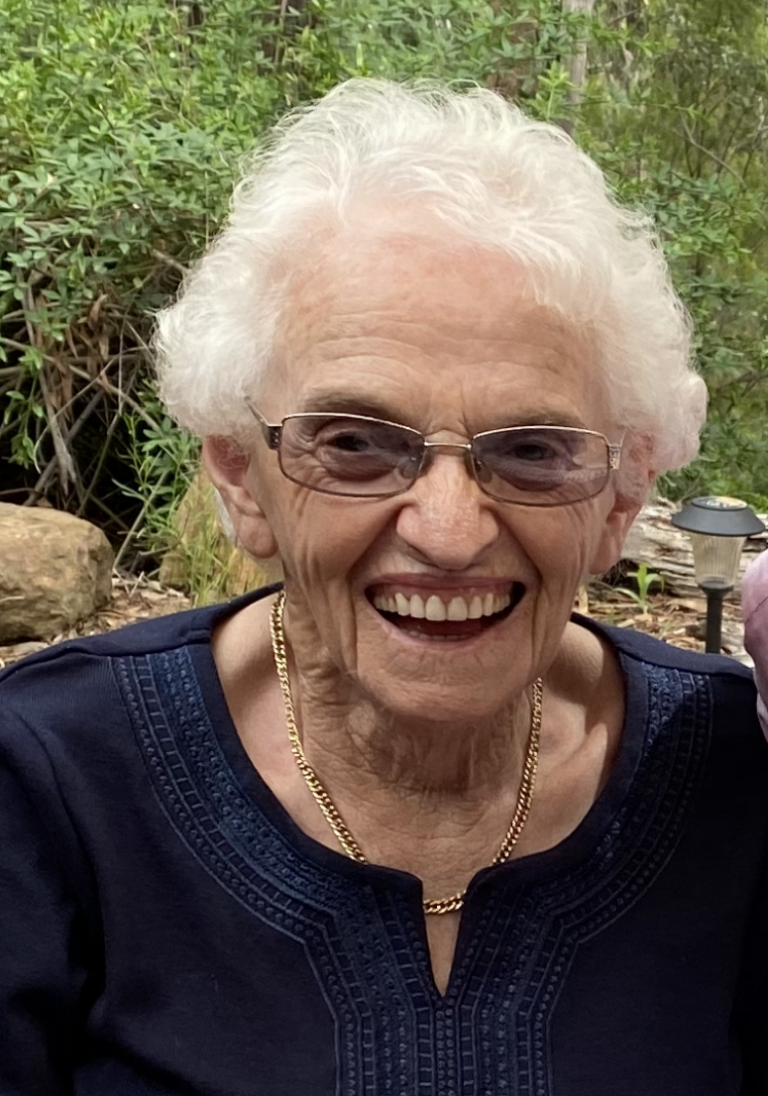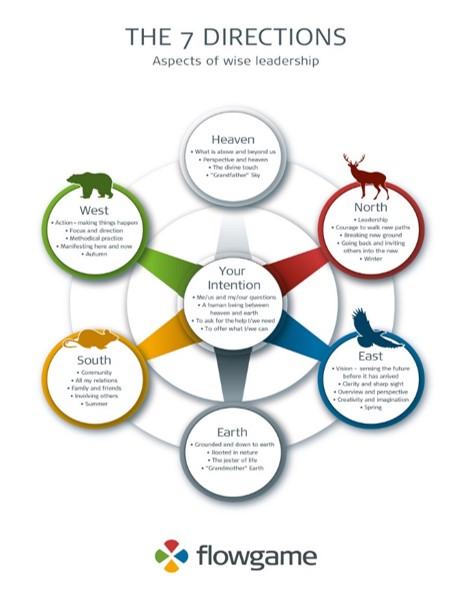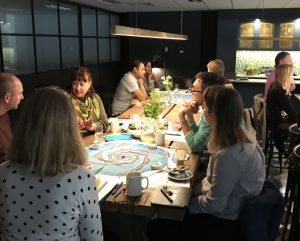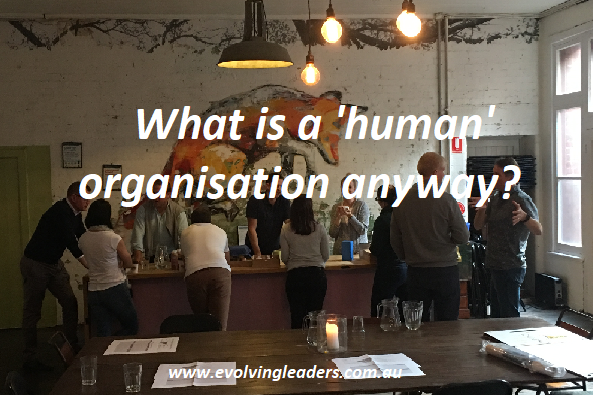This post shares a personal story and suggests that every human being on the planet right now, in some shape or form, is facing into their own ‘growth edge’. It invites the reader to reflect on what they are noticing in themselves and others in terms of this personal learning and highlights that perhaps the luckiest people right now have leaders and organisations that are providing development and wellbeing support for their people.
Meet Elaine. She is my delightful 84-year-old mother-in law. Elaine left school at age 15 to help with home duties on the family farm and continued in that role all through motherhood and grandmother-hood.
In her lifetime, she has baked tonnes of lemon slice and the arguably the best chocolate cake ever. When she isn’t baking, she pours all her energy and focus into supporting her community and showering us – the family – with her love.
Throughout her lifetime, Elaine has felt no desire for, nor any reason to, use a computer or a smartphone. And so, in March 2020, as the world felt like it was closing in on all of us, we realised that that Elaine would soon be in total isolation. Without even the stilted connectedness the internet offers the rest of us, she would have very limited contact with her her family and friends, and we were concerned about the flow-on impact this would have on her overall wellbeing.
So, without further thought, we purchased her an iPad. In a curious way, one of the first questions she asked was, ‘Why is the keyboard not in alphabetical order?’ She had never used any sort of keyboard in her life, let alone an email address. How much we take for granted! This was completely uncharted territory for her.
The rest is history.
True to form, with her enthusiastic approach to a new challenge, she was up-and-running in no time. The pure delight we witnessed when Elaine had her whole family (across many geographical locations) in front of her on the first Facetime call is a precious moment that will stay in my heart forever.
If you had said to me six months ago that, in the year 2020, Elaine would be making Facetime calls, ordering her groceries and doing her banking online, I would have broken out in laughter!
But she was soon doing all of that. We are so proud of her.
Elaine’s story got me thinking about what the disruption of this year has meant to all of us in terms of the learning we have been somewhat forced to do or had to do in many ways. What became clear to me is that every human being on the planet right now has had to confront their own fear at some level and learn something new, or make some change that they would not have made without the pandemic.
No one is exempt. It has been, and continues to be, a true ‘growth edge’ experience for us all. (Read more about growth edge here)
Do you agree? Where have you noticed this happening?
What are you being asked to or forced to change at this time?
What is your personal growth edge right now?
Some examples from my own ‘growth edge backyard’ are:
- quickly getting up to speed and proficient at creating connection and engagement online so as to be able to effectively deliver team development via an online platform. Like many, I still really don’t like facilitating groups on Microsoft Teams, but at least I know how to do it.
- taming my voice in our family to allow each person an equal say in shaping the healthy boundaries needed for life in isolation in a household of five people (that is, learning to listen better and not assuming I always have the best answer)
- establishing a healthy and productive work rhythm by creating greater structure around my allocated working hours, which in my case means 90 minute cycles then taking a break (here is a great article on this topic).
Most clients that I am currently working with are struggling with many aspects of work and life – juggling home schooling, too many hours on Zoom and experiencing other financial and social pressures. It’s the norm rather than the exception right now.
What is being demanded of people by this pandemic in terms of growing and changing for many feels heavy and hard. I am also noticing, however, that the luckiest people during this time work in organisations and with leaders that recognise the need for, and are investing in, the wellbeing and development of their people. It is from this support base, that people can begin to make sense of themselves and their own experiences and begin to see some reward and celebration of their efforts on the other side.
The benefits flow on, as when this growth edge can be applied within a broader team context, it is even more powerful. As individuals grow and change and are able to be more vulnerable and courageous with themselves – as 84-year-old Elaine has demonstrated so well, and when they can do this with their teams as well, then team culture can grow in ways that are good for all.
Could you or your team do with support right now? Please get in touch to book your team development – delivered remotely of course.
This post includes our vision for the ‘human’ teams and organisations of the future that we need to be designing and creating right now to respond and flourish in a rapidly changing world. We call these ‘human organisations’. The post includes the characteristics of a human organisation to help you do a ‘mini-audit’ on the health of your own team/organisation.
“A culture in which everyone could overcome their own internal barriers to change and use errors and vulnerabilities as prime opportunities for personal and company growth.”
– Robert Kegan in Everyone Culture: Becoming a deliberately developmental organisation
Almost anyone who has worked in an organisation has experienced at least some of the aspects of disconnection that have become commonplace in workplaces everywhere. Too often businesses seem to lose sight of the fact that they are, at their core, the sum of the humans of which they are composed. There is ample evidence that this needs to change if businesses are serious about flourishing in the complexity of today’s world.
What is a human organisation?
Human organisations are ‘well’ organisations that are on a deliberate and focussed developmental and cultural evolutionary pathway towards full spectrum consciousness.
There are two central threads that are the woven foundations of a human organisation:
Connection – Connection to self, connection to each other, connection to purpose and vision and connection to the people they serve; and
Accountability – Accepting and embracing accountability to self, each other, the reality (role, team, goal, project, organisation) and holding self and others to account.
Human organisations exude a healthy vibrant culture in which people are inspired to bring out the best possible versions of themselves. In human organisations, people perform at their best without being coaxed or bribed to do so. Instead of reverting to immature behaviours of blame and justification when they come to work, they see themselves as well-rounded adults whose task is to make a meaningful contribution and to help others do likewise.
The result is far more significant contributions from many more people, and a lot less wasted time and emotional energy. The result is greater success in traditional business measures (e.g. profitability and customer satisfaction) as well as improved wellbeing, increased engagement and sustainable human potential.
What are the characteristics of a human organisation?
Some of the characteristics you’re likely to see in a human organisation include:
- Customers feel listened to and their needs are meet at a level beyond their expectations because employees deeply care and feel cared for and supported by the organisation.
- Leadership is less about position than it is about mindset and behaviour. Everyone in the organisation is capable of being recognised as a leader through the way they behave and the choices they make, through supporting others and taking personal responsibility rather than resorting to blame, justification and denial. No one is seen as a leader unless they demonstrate leadership in this way, regardless of their position or title.
- Purpose driven: there is a clear and central ‘why’ that is harvested and activated by the people for the people. It is a grounded source of energy and focus that clarifies, inspires and informs decisions, action and behaviour.
- People are motivated through feeling valued. There is an alignment between what matters to them, the work they do and the workplace culture.
- Connection – real, human connection – with courage and compassion are at the heart of everything that is done within the organisation and for those it serves. Get Connected
- People feel empowered to make choices. High levels of confidence, personal awareness, and accountability exist throughout the organisation.
- People are held to account – They know what is expected of them in their roles and how they ‘show up’ and there are efficient and effective practices and leadership capability to manage this effectively.
- People take responsibility for their own development in a culture of learning and growing.
- People feel a sense of belonging. It feels safe for people to fully show up as who they are and make a meaningful contribution with their unique skills, strengths and preferences. The workplace and its practices are diverse and inclusive and team members experience high levels of psychological safety which results in higher levels of team performance.
- People are highly engaged, feeling a greater sense of connection with their own sense of purpose, with their colleagues and as co-contributors to the organisation’s success in terms of profitability, wellbeing and benefit to the community.
- Internal divisions and turf wars are minimised. Shared values and purpose provide the framework for conversations, decision-making and behaviour. Strategy, culture, purpose and wellbeing are aligned.
- People listen to one another.
- Innovation and creativity are well understood, practised and regarded as ways the organisation can ‘separate itself from the crowd’.
- Reflective practices are woven into the fabric of the organisation. This may include specific mindful moments in meetings, the way performance conversations are had, allocated time and expectations for people to build reflective practice into their weekly rhythm.
- Time and space to think and learn are valued. The space is created to allow people to get to know each other and to reflect on the learning from projects and other experiences they encounter in their day to day. This becomes a part of the daily, weekly, monthly and annual rhythm.
You may like to pause and reflect for a moment here:
- What is the current state of health of your team or organisation?
- What are the strengths that you can build on?
- What areas do you need to bring greater focus to?
- What is one step you can take this week to get started?
Where it starts
Ignoring the need to make your organisation more human is to turn a blind eye to what we know requires a new level of response. It is no longer an option to stand still. The teams and organisations that will thrive and attract the best people are the ones that make the courageous and bold step to begin this developmental, leadership and cultural evolution journey.
However, it needs to be recognised that human organisations are not created overnight. They need to be imagined and designed ‘by the people, for the people’, then given the guidance, investment, nourishment and support they need to grow.
The shift towards a human organisation begins with bringing new awareness to the leadership team about the possibilities of becoming such an organisation. We help leaders to make the connection between the cycle of pain, dysfunction, cultural entropy and poor performance that they may be experiencing in their teams and organisations and bring focus to the antidote for this – which is intentionally growing and creating ‘human organisations’.
Initial steps often involve understanding the current stage of cultural maturity and the cultural evolution required for the team /organisation to evolve to a level of cultural maturity that will enable the business aspirations, measurement of the existing organisational culture, beginning the conversation around organisational purpose and vision and igniting the learning journey for leaders and their teams.
A key part of the learning here is about helping leaders to better understand the visible and invisible forces driving, engagement, wellbeing and performance in the organisational eco-system. A great basis for this conversation and to help build understanding of the organisation as a whole interconnected system is Ken Wilbur’s four quadrant model. It helps to bring a ‘whole of system’ focus and is a great basis for surfacing what is currently helping and what is hindering the organisation’s progress, ahead of then designing a roadmap for cultural and leadership evolution.
If all this sounds just too complex and difficult right now, may I offer one powerful snippet of wisdom:
Connection and Accountability are the golden threads that are woven throughout a human organisation.
In every moment – thought, action, word, decision – we have a choice. We can choose to move towards disconnection or we can choose to move toward connection. In that very action we are being accountable to ourselves, each other and our workplaces.
I choose to grow connection.
What do you choose?
In my next post, I will explore the personal leadership that is required to grow a human team/organisation.






